ARE YOU A GENUINE OPTICIAN
OR AN EYEGLASS MERCHANT?

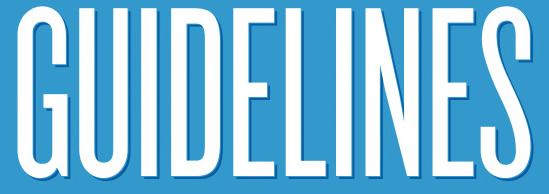
POINTS
TO PONDER
"It's time to shift your thinking.
It's time to get your shift together.
It's time for eyewear professionals
to become agents of change going forward;
it's time to return to the days of providing full service;
to improve our hands-on craftsmanship skills; it's time
for those who know to teach those who do not know; and
it's time for those who do not know to surrender their ego."
"Opticianry is defined by how well the eyewear makes contact with the patient.
All Opticianry is local. Eyeglass consumers need and deserve the following:
a) Optician-assisted, in-depth lifestyle interview;
b) Optician-assisted, design and selection;
c) Handcrafted, form-fitting eyewear;
d) Free lifetime adjustments and
minor repair services, none of
which are available online."
OpticalGuidelines.com
"What do dentists, manicurists, hairstylists and
opticians all have in common? They have to make direct,
tactile contact with consumers while dispensing services."
"When
Opticians do not touch the consumer at the time
they dispense their
eyewear, they are acting more
as unskilled eyeglass merchants than as Opticians."
"Opticians
must exercise multi-dimensional opticianry,
i.e., full Discovery, masterful Design, and touch
and feel Delivery of prescription eyewear."
"Opticians
are vision experts who serve Patients with
comprehensive vision solutions as opposed to eyeglass
merchants who just sell Customers glasses and contact lenses."
"What
are the chances of today's eyewear consumers getting a
hands-on,
customized fitting of their prescription eyewear? If you
answered this question correctly, you know why they buy online."
"The manager of a nationwide retail optical dispensary
advised a staff member who attempted to customize a
frame as seen here that they would be fired if they tried to
fit another 'customer' with such an ugly looking adjustment."
"After many years of failing to provide the public with
hands on the patient frame-fitting services, dispensers
have suddenly discovered that consumers are flocking
to the Internet* for their eyewear, where likewise, they
are unable to acquire customized frame-fitting services.
Refusing to admit culpability, these same retailers now
blame cheap online prices and unethical practices for the
erosion of market share and the steep decline of revenues."
(See AARP's 'Your Money,' December,
2011, as example.)
"More
and more eyewear is being purchased online.
The number one complaint of brick and mortar
patrons ...
'Nobody adjusted my glasses. They just handed
them to me.'
So, for these consumers there's little difference between the service
they receive in many of today's dispensaries and buying glasses online."
"If you will recall, Opticianry is ultimately defined by how well
the eyewear fits the Patient. So, the real issue for Opticians and
Consumers to consider, is not whether prescription eyewear can be
purchased in stores or online. The real issue is the current deficiency
in the delivery of eyewear due to the absence of the craftsmanship
and skills required to dispense form-fitting eyewear to the Consumer.
The real challenge for any Optician is to take a symmetrically, 4-point
square device and handcraft it to fit an asymmetrically shaped surface.
The answer is hands-on training, hands-on training, hands-on training.
It's time for those Opticians who know to teach those who do not know.
And it is time for any Opticians who do not know to surrender their egos.
It's been predicted that if Opticians fail to practice customizing eyewear to
fit the Patient, Opticianry will become irrelevant as a healthcare profession. "
"It is incumbent on those who know...to teach those who do not know."
"Hand
crafted multi-dimensional adjustments, including tactile, hands-on,
touch and feel procedures
such as reshaping the temple ends to make direct
and full, touching-without-pressing contact with the mastoid area behind the ears,
while simultaneously avoiding direct contact with the pressure-sensitive
ears, is
the single most important considerations for long term comfort
and wearability."
"It
is time for direct, touch and feel, handcrafted frame-fitting training to happen.
This is done by one-on-one craftsmanship training. It cannot be
learned virtually."
*This workshop meets the Florida Board of Opticianry's requirement
for Apprentices to attend a two hour Hands-On Frame-Fitting course.
Optical Workshops is Florida Board of Opticianry CE Provider #50-13776.
Click or Call  855-410-2700 to arrange for a Training Session.
855-410-2700 to arrange for a Training Session.

'Professional Egotism'
 There are a number of conflicted forces at work within the ophthalmic dispensing industry, which keep us from making progress. The two biggest are: There are a number of conflicted forces at work within the ophthalmic dispensing industry, which keep us from making progress. The two biggest are:
 .) We have not yet effectively dealt with the reality that the majority of current dispensers are woefully under trained and extremely challenged when it comes to handcrafting prescription eyewear. For instance, I know senior Opticians who attend Optical Workshops who are unable to adequately customize eyewear directly on a Patient. (The number one complaint by prescription eyewear consumers is they are unable to acquire well-fitting eyewear.) .) We have not yet effectively dealt with the reality that the majority of current dispensers are woefully under trained and extremely challenged when it comes to handcrafting prescription eyewear. For instance, I know senior Opticians who attend Optical Workshops who are unable to adequately customize eyewear directly on a Patient. (The number one complaint by prescription eyewear consumers is they are unable to acquire well-fitting eyewear.)
 .) There's also a lot of what I call professional egotism and shaktipad (see NOTES* below), whereby many 'Opticians' are unable to admit, either through ignorance or antipathy, that they really do not know how to adjust eyewear, i.e., handcraft eyewear directly on a patient. Many only think they know and take umbrage when challenged. They have convinced themselves that they need no more training because they've been adjusting frames for years, and they see no need to change. .) There's also a lot of what I call professional egotism and shaktipad (see NOTES* below), whereby many 'Opticians' are unable to admit, either through ignorance or antipathy, that they really do not know how to adjust eyewear, i.e., handcraft eyewear directly on a patient. Many only think they know and take umbrage when challenged. They have convinced themselves that they need no more training because they've been adjusting frames for years, and they see no need to change.
Regarding this 'professional egoism' issue, we suggest that we ask this question of those dispensers who claim they already know how to fit eyewear, and those who claim that they have been working as an Optician for several years. "Have you had any formal training in handcrafting eyewear directly on the consumer?"
The problem is that many folks are self-taught, and most of those who came up as apprentices were taught by dispensers who have had no formalized hands-on the consumer, frame-adjustment training.
This decades-old history is the main reason, not price, that Opticianry as a profession has lost, and continues to lose market share.
Therefore it is incumbent on those who know to teach those who do not know. And it is incumbent on those who do not know to surrender their ego. OpticalGuidelines.com OpticalGuidelines.com
*NOTES:
EGOTISM is the feeling or belief that one is better, more important, more talented, etc., than other people.
SHAKTIPAD is a state of egotism in which an optical dispenser is far less experienced, knows far less than they think they know, and who fails to acknowledge it. The worst case scenario is the optician who falls into the trap of convincing themselves and others that only they know the best way, and that the old ways need to change. Beware of the 'tiger's bite'! Shaktipad is a consequence of 'riding the tiger' of pride. One must ever be alert to the signs of shaktipad in order to take appropriate action. In the case of an optical dispenser in the state of shaktipad, the remedy is to seek out practical training with the attitude of a perpetual student, i.e., one who surrenders their ego, realizes that learning never stops, and that one can always improve their skills. See Ego Eradicator. |
INTRODUCTION
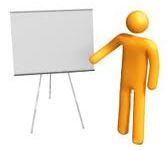
This
Workshop is for experienced Opticians who wish
to either learn new techniques or improve their current skills,
and will fulfill 2 hours of continuing education requirements.
(See Optical Workshop 1.) This Workshop has been accredited by ABO, the American
Board of Opticianry, and approved by the Florida Board of Opticianry. This
Workshop meets all accreditation requirements by providing a)
Advanced and practical training in the all important 'Full Discovery
and Disclosure' Lifestyle
Interview, including Trial
Lens and Frame use for the purpose of demonstrating lens design
variables to the Patient, especially first-time wearers, b) A
practical review of eyewear ALIGNMENT to include a visual-tactile
assessment of the most obvious misalignments of the Patient's
frame and lenses, while in-place, and on-the-face, and c) The
practical application of much more subtle form-fitting ADJUSTMENTS using touch and feel techniques
in order to address the more challenging aspects of the Patient's
frame-fitting issues in order to maximize their visual comfort
and long term wearability. See example below.
Trial Frame and Lenses on Patient
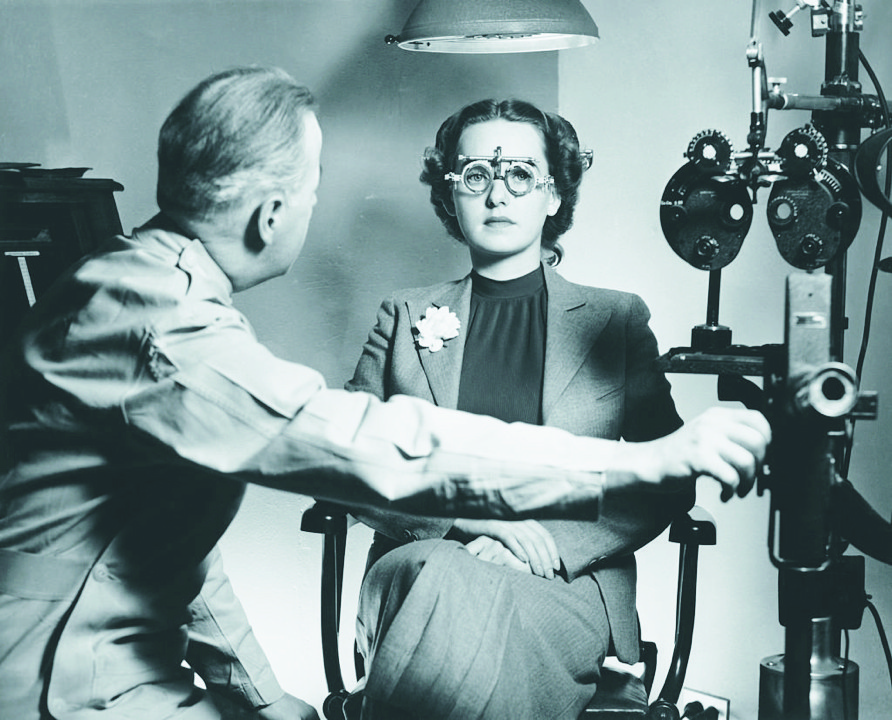
IMPORTANT Beginning May 1, 2013, attendance at a minimum 2-hour State Board Approved Hands-on Handcrafted Frame-Fitting Workshop is
required of ALL applicants prior to licensure in Florida.
Beginning May 1, 2013, attendance at a minimum 2-hour State Board Approved Hands-on Handcrafted Frame-Fitting Workshop is
required of ALL applicants prior to licensure in Florida.
OLD FASHIONED MULTI-DIMENSION
HANDCRAFTED ON THE PATIENT CRAFTSMANSHIP
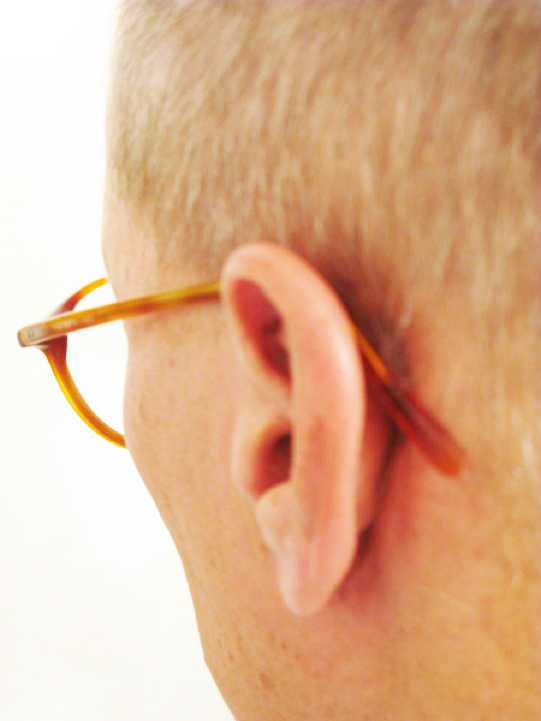
Note big gap between skull and temple-end.
THE
NO TOUCH - NO HOLD PRINCIPLE
"Where
there's no touch, there can be no hold.
Temple-ends must fully contact the mastoid complex.
Temple-ends cannot hold eyewear in place for long-term
comfort if they do not make full contact with the mastoid.
Full contact does not mean pressure. Touch only is necessary."

Form-fitting the
Mastoid Complex
With Handcrafted Mastoid Dip and Wrap
Every
Patient deserves sufficiently handcrafted,
multi-dimension, form-fitting frame adjustments, e.g.,
gaps and spaces are removed from between the frame's
temples and the skull behind the ears, in order to enhance
comfort, stability, and long term wearability. Full contact
with
a light touch of the skull, NOT THE EARS, is the primary means
by which the frame should be held in place for long-term comfort.
Note: If you're able to teach this skill, contact me at LinkedIn.com. 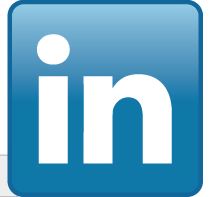

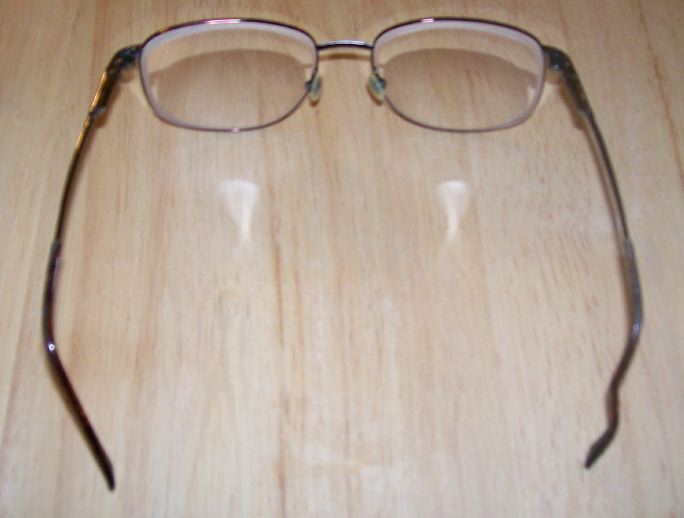

BEFORE temple-end is in out-of-the-box condition,
i.e., it doesn't make contact with the Patient's
skull,
whereas the AFTER temple has been form-fitted with
an added handcrafted mastoid dip and mastoid wrap.
It now fits the mastoid bone like a glove since it has
been
shaped to make full, direct contact with this Patient's
skull.
Custom-fitted by hand temples become invisible when worn
and the
resultant fit avoids pressure and is extremely comfortable.
Note: This skill cannot be learned virtually, i.e., via lecture or online.
This skill is acquired only by handcrafting the eyewear using direct, face
to face, on the Patient, tactile, touch and feel contact with the Patient. The
availability, knowledge and skilled use of related handcrafting tools is essential.
Also, keep in mind that online merchants are incapable of providing this service.
OBJECTIVES
"Successful
dispensing requires the careful and thoughtful
process of Discovery, Design, and Delivery of eyewear
without bias concerning sales quotas, profit margin or
other subjective and unrelated considerations."
Although
the Full Discovery and Disclosure Interview, and Frame-Fitting
Techniques are not the only aspects of what is called Ophthalmic
Dispensing, today these are much underrated, even subordinated
skills. Dynamic lens design using Trial
Frame and Lenses, and frame-fitting skills, which can be acquired
only through direct, practical experience, must include: a) Visual
as well as tactile, touch and
feel, hands-on assessment of the eyewear in-place , on the face, b) Frame
Alignment, i.e., correcting the most obvious misalignments,
and c) Form-fitting Temple-To-Skull
Adjustments, i.e., personalized, handcrafted multi-dimensional adaptations such as form-fitting the temple-ends relative to the
skull and mastoid complex, and then, 90 degrees relative to the ears, is one
of the most important considerations for comfort and long term
wear. Not only is a poorly fitted frame likely to cause discomfort
and inconvenience to the Patient, but in cases of higher lens
powers and high astigmatic corrections it can even adversely effect
the prescription, thus creating additional visual problems. See example above.
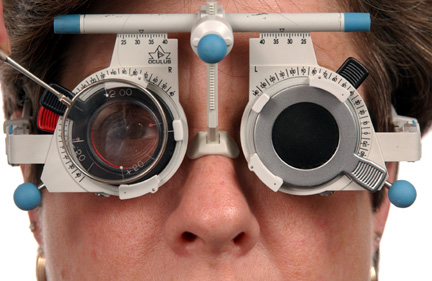
Trial Lens and Frame
Upon
completion of this course the Eye Care Professional will:
 Be more familiar
with Trial Frame and Lens and-or Phoropter Use for the purpose of demonstrating the Rx to
the Patient's satisfaction as well as the many variable options in lens design.
Be more familiar
with Trial Frame and Lens and-or Phoropter Use for the purpose of demonstrating the Rx to
the Patient's satisfaction as well as the many variable options in lens design.
 Be more familiar
with the Comprehensive Patient Lifestyle Interview and Full
Discovery-Disclosure procedure, which includes the Patient's
vocational and avocational lifestyle, which precedes any design
of the lenses and any final selection of a frame.
Be more familiar
with the Comprehensive Patient Lifestyle Interview and Full
Discovery-Disclosure procedure, which includes the Patient's
vocational and avocational lifestyle, which precedes any design
of the lenses and any final selection of a frame.
 Be more familiar
with the basic parts of the ophthalmic frame and its measurement
criteria.
Be more familiar
with the basic parts of the ophthalmic frame and its measurement
criteria.
 Appreciate
the various frame styles, nose piece-bridge designs, and types
of temples currently available.
Appreciate
the various frame styles, nose piece-bridge designs, and types
of temples currently available.
 Appreciate
the importance of providing the Patient with unbiased assistance
as to price in their selection of the proper frame size and style,
and lens design.
Appreciate
the importance of providing the Patient with unbiased assistance
as to price in their selection of the proper frame size and style,
and lens design.
 Be more familiar
with proper frame selection using the shape of the face and head,
placement of the eyes and ears, and the nature of the prescription
as criteria, with emphasis on the adverse consequences of a poorly
designed and-or fitted frame.
Be more familiar
with proper frame selection using the shape of the face and head,
placement of the eyes and ears, and the nature of the prescription
as criteria, with emphasis on the adverse consequences of a poorly
designed and-or fitted frame.
 Appreciate
the qualitative aspects of dispensing corrective eyewear using
tactile, hands-on, in-place, on the face visual-tactile, eyewear
assessment and touch and feel, frame-fitting techniques.
Appreciate
the qualitative aspects of dispensing corrective eyewear using
tactile, hands-on, in-place, on the face visual-tactile, eyewear
assessment and touch and feel, frame-fitting techniques.
 Be more familiar
with the tools and conditions that are necessary for the application
of hands-on frame-fitting skills, i.e., proper placement of tools
and instruments, dispensing table design, etc.
Be more familiar
with the tools and conditions that are necessary for the application
of hands-on frame-fitting skills, i.e., proper placement of tools
and instruments, dispensing table design, etc.
 Observe and
experience hands-on, in-place, on the face, touch and feel frame-fitting techniques whereby comfort, prescription integrity, and
frame wearability are achieved and-or sustained.
Observe and
experience hands-on, in-place, on the face, touch and feel frame-fitting techniques whereby comfort, prescription integrity, and
frame wearability are achieved and-or sustained.
 Experience
and appreciate the difference between Basic Frame Alignment and
the More Subtle Frame Adjustments.
Experience
and appreciate the difference between Basic Frame Alignment and
the More Subtle Frame Adjustments.
 Be better able
to serve Patients with handcrafted, personalized, custom fitted
eyewear and frame adjustments. See
example above.
Be better able
to serve Patients with handcrafted, personalized, custom fitted
eyewear and frame adjustments. See
example above.
 Experience
and appreciate the distinction between an Eye Care Professional's
custom fitting of corrective eyewear directly on a Patient versus an unskilled Merchant casually delivering one-size-fits-all
merchandise to a Customer. See Hands-on Workshops Study Guide.
Experience
and appreciate the distinction between an Eye Care Professional's
custom fitting of corrective eyewear directly on a Patient versus an unskilled Merchant casually delivering one-size-fits-all
merchandise to a Customer. See Hands-on Workshops Study Guide.
WORKSHOP
PROTOCOL AND MATERIALS
PROTOCOL: The
Advanced Workshop will explore a) Advanced visual-tactile
assessment of frame and lens design using a Trial
Frame and Lenses, and advanced hands on the patient form-fitting frame alignment
techniques, i.e., x, y, z planes; pantoscopic
tilt; facial wrap; frame temple-to-skull fitting; etc., as
well as b) The subtlest of adjustments involving more highly evolved
aspects of frame-fitting, i.e., form-fitting mastoid
dip and wrap, which attendees may never have experienced nor
had the opportunity of seeing demonstrated, first hand.
Each participant
will assume an alternating role as 'Dispenser' and 'Patient' in
order to acquire a direct touch
and feel experience and a more comprehensive perspective
of handcrafted frame-fitting. All work will be critiqued by an
experienced and licensed, 'Hands on the Patient Trained' Optician.
Participants will be challenged to overcome any timidity with regard
to directly assessing eyewear while on the Patient
and subsequently using touch and feel methods by which to determine the appropriate
adjustments to be made using their hands as well as
related hand tools.
MATERIALS: A Trial Frame with Lenses will be provided in order
to demonstrate how to make lens design determinations. Two types of frame warmers, hot air and convection,
a selection of zyl and metal frames, plus related hand tools
are to be provided in order to demonstrate and practice with hands-on-the-patient, the art of handcrafted form-fitting of eyewear. Attendees may bring their own hand tools by reason
of familiarity. See Intermediate Level Workshop.
Also see Refraction Tutorial and Letter To Eye Care Professionals. See Enough With The Talking Points.
 See articles from fellow ECPs.
See articles from fellow ECPs.


